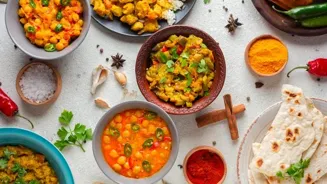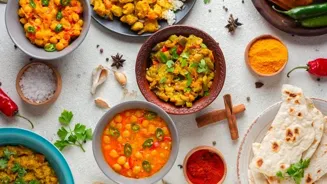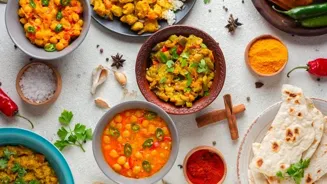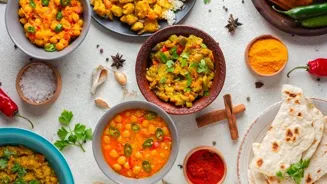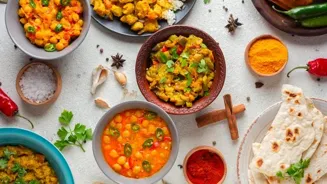Discover the world of Indian lentils - from Toor Dal to Rajma, learn about 10 varieties & how to cook them perfectly
Lentils, or dals as we fondly call them in India, are a cornerstone of Indian cuisine.
They are a powerhouse of protein, fiber, and essential nutrients, making them a staple in most Indian households.
From the creamy smoothness of Dal Makhani to the simple yet comforting Moong Dal, lentils offer a diverse range of flavors and textures. But with so many varieties available, how do you choose the right one and cook it to perfection?
Fret not; this guide will walk you through 10 popular Indian lentils and provide you with the tips and tricks to make the most delicious dal every time.
Toor dal: versatile and nutritious staple in Indian cuisine
Let's begin with Toor Dal (Arhar Dal/Split Pigeon Pea). This yellow lentil is perhaps the most commonly used dal in India, and it forms the base of many classic dishes like Sambar and Dal Tadka. Toor dal has a slightly nutty flavor and a creamy texture when cooked.
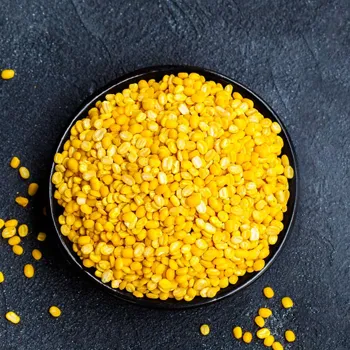
To cook it perfectly, soak it for at least 30 minutes before cooking to reduce cooking time and improve digestibility. Pressure cooking is the most efficient way to cook toor dal, resulting in a soft and mushy consistency ideal for mashing.
Remember to add a pinch of turmeric powder while cooking for color and added health benefits. A tempering of ghee, cumin seeds, mustard seeds, and curry leaves elevates the flavor of this simple yet wholesome dal.
Moong dal: easy to digest, versatile in cooking, great for babies and recovery
Next on our list is Moong Dal (Split Green Gram). Known for its ease of digestion and mild flavor, moong dal is often recommended for babies and those recovering from illnesses . It comes in both split (dhuli) and whole (sabut) forms.
The split version cooks quickly and becomes soft and creamy, while the whole version takes longer to cook but offers a slightly more textured bite. For a light and comforting Moong Dal Khichdi, cook the dal with rice and a few spices.
Or, try a simple Moong Dal Tadka, where the cooked dal is tempered with ghee, cumin seeds, and asafoetida. Soaking the dal is not essential, but it can further reduce cooking time.
Urad dal: versatile lentil in rich Punjabi Dal Makhani
Moving on to Urad Dal (Split Black Gram). This lentil is the star ingredient in Dal Makhani, a rich and creamy Punjabi delicacy. Urad dal is also used to make idli and dosa batter. It has a slightly earthy flavor and a mucilaginous texture when cooked.
For Dal Makhani, the dal is traditionally soaked overnight and cooked for hours on low heat with butter and cream, resulting in an incredibly decadent dish. However, you can also pressure cook it to save time.
Remember to skim off any foam that forms on the surface while cooking, as this can cause indigestion. A generous dollop of butter and fresh cream at the end is a must!
Chana dal: nutty, versatile lentil for savory and sweet dishes
Chana Dal (Split Bengal Gram) which is a close cousin of chickpeas, has a nutty flavor and a slightly coarse texture. It is used in various dishes, from dals and curries to sweets and snacks like dal vadas.
Chana dal takes longer to cook than other lentils, so soaking it for at least a couple of hours is essential. Pressure cooking is the best method for achieving a soft and tender texture. Add a pinch of baking soda while soaking to further soften the dal.
Chana dal pairs well with spices like ginger, garlic, and garam masala. In South India, it is often used in Sambar and other lentil-based curries.
Masoor dal: quick-cooking, versatile lentil for easy meals
Now let's talk about Masoor Dal (Red Lentil). This is one of the easiest and fastest-cooking lentils. It doesn't require pre-soaking and cooks in about 20-25 minutes. Masoor dal has a mild, earthy flavor and a slightly reddish-orange color. It is a great option for quick and easy weeknight meals.
A simple Masoor Dal Tadka made with tomatoes, onions, and a few spices is a delicious and nutritious option. You can also add it to soups and stews for added protein and fiber. Remember to rinse the dal thoroughly before cooking to remove any impurities.
You can even add a squeeze of lemon juice after cooking to brighten up the flavor.
Popular Moth Dal: sprout for nutrition; robust, earthy flavor in regional dishes
Here comes Moth Dal (Matki Dal/Dew Bean). This lentil is popular in Maharashtra and Gujarat. It is typically sprouted before cooking. Sprouting enhances the nutritional value and makes it easier to digest. Moth dal has a slightly earthy and nutty flavor.
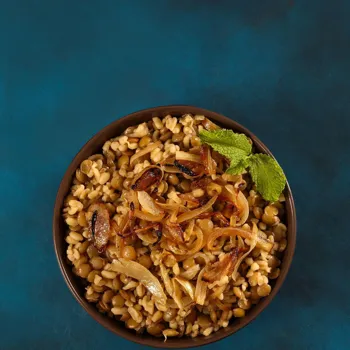
Before cooking, it's recommended to sprout Moth Dal. The sprouted dal can then be cooked in a pressure cooker or pot until tender. It's often used in Misal Pav, a popular Maharashtrian street food, and Gujarati dishes like Undhiyu. The dal's robustness pairs well with bold spices.
Kulthi Dal: Nutritious lentil with iron, protein, earthy flavor, recommended for weight loss
Let’s move on to Kulthi Dal (Horse Gram). It is a lesser-known but highly nutritious lentil, traditionally valued for its health benefits. It is rich in iron and protein, and is often recommended for weight loss and managing blood sugar levels.
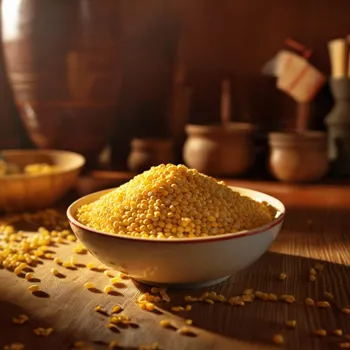
Kulthi dal has a distinct earthy flavor that some may find acquired. It requires extensive soaking (overnight) and prolonged cooking to soften it. Pressure cooking works well. Kulthi dal is often used in soups and stews, especially during the winter months.
Its strong flavor pairs well with spices like cumin, coriander, and dried red chilies.
Rajma Dal: staple in North Indian cuisine, rich in nutrients, requires proper cooking methods
Now let's discuss Rajma Dal (Kidney Beans). Yes, rajma, those kidney-shaped beans, are technically legumes and often cooked like lentils in Indian cuisine. They are a staple in North India, especially in the popular dish Rajma Chawal. Rajma is rich in protein, fiber, and iron.
Rajma requires overnight soaking and thorough cooking to remove toxins. Boiling is essential to eliminate toxins. Pressure cooking is the most effective way to achieve a creamy and tender texture.
Rajma Chawal, a classic North Indian dish, often includes a tomato-based gravy with spices like ginger, garlic, and garam masala.
Lobiya (Black-eyed Peas): versatile bean prized for texture and flavor; high in protein
Moving on to Lobiya (Black-eyed Peas). Though technically a bean, it's commonly cooked and consumed like a lentil in India. Lobiya is prized for its creamy texture and slightly sweet flavor. It's a good source of protein and fiber. Lobiya beans must be soaked for several hours before cooking.
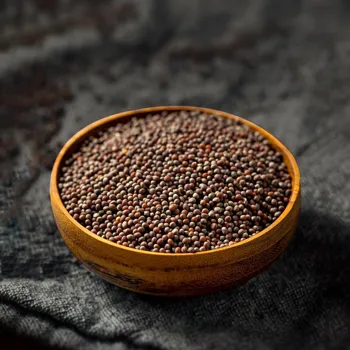
Similar to rajma, thorough cooking is essential. Pressure cooking significantly reduces cooking time. Lobiya can be enjoyed as a simple dal, or used in curries or salads.
In North India, it's frequently made with a tomato-onion-based gravy, while in South India, it's often combined with coconut milk and spices.
Colorful Panchratna Dal: Blend of five lentils, nutritious, flavorful, and versatile
Lastly, let's talk about Panchratna Dal (Mixed Lentils). This colorful mix of five lentils (typically toor, chana, moong, urad, and masoor) offers a blend of flavors and textures. It provides a well-rounded nutritional profile and is visually appealing.
The cooking time can vary based on the mix of lentils. Soaking for a few hours is generally beneficial. Pressure cooking ensures that all lentils cook evenly. Since this dal has a variety of lentils, adjust the seasoning to complement the overall flavor.
This flavorful lentil dish provides a diverse array of nutrients, making it a wholesome addition to any diet.
AI Generated Content. Glance/InMobi shall have no liability for the content